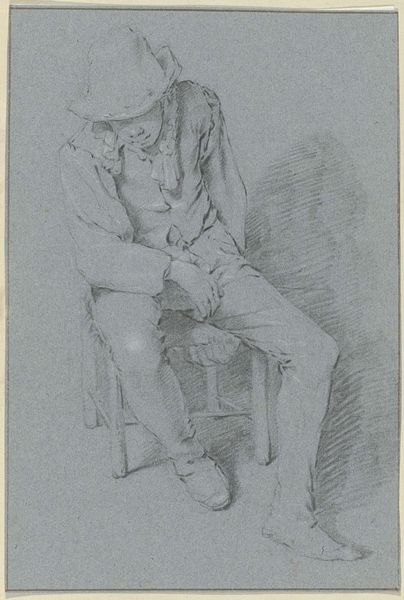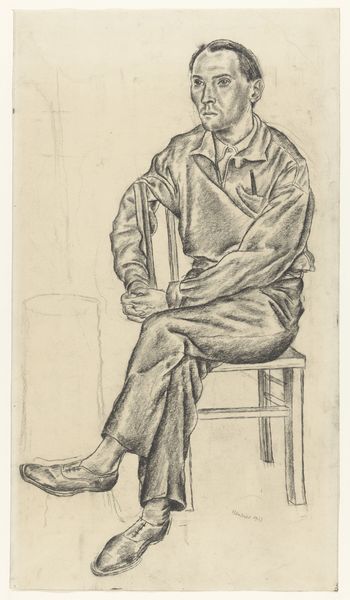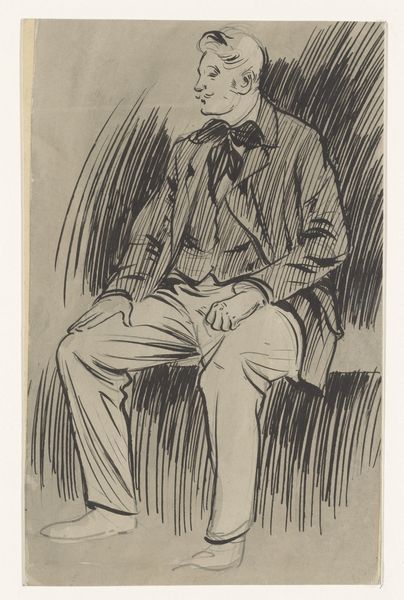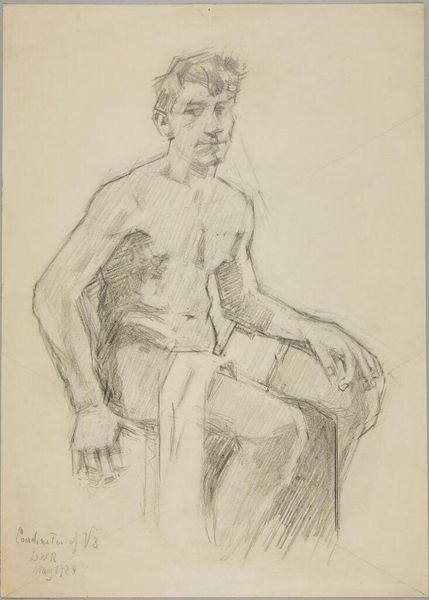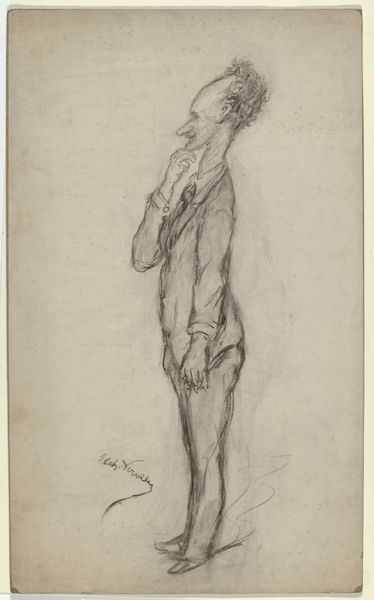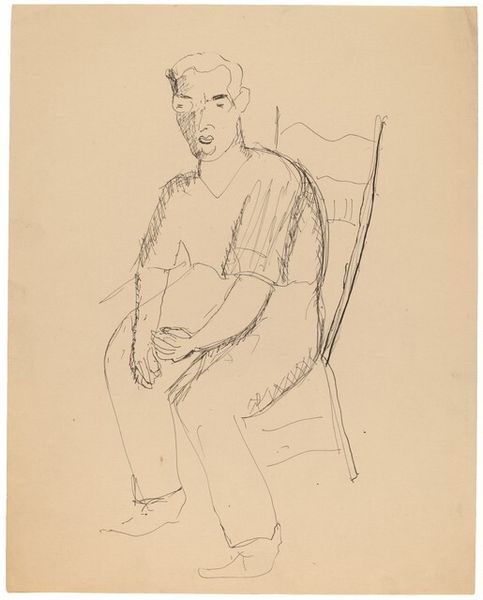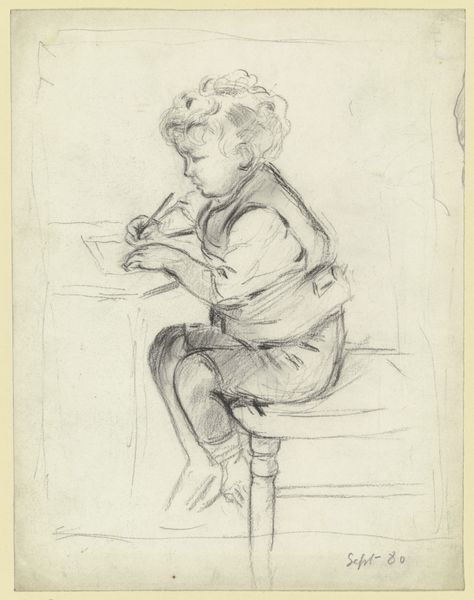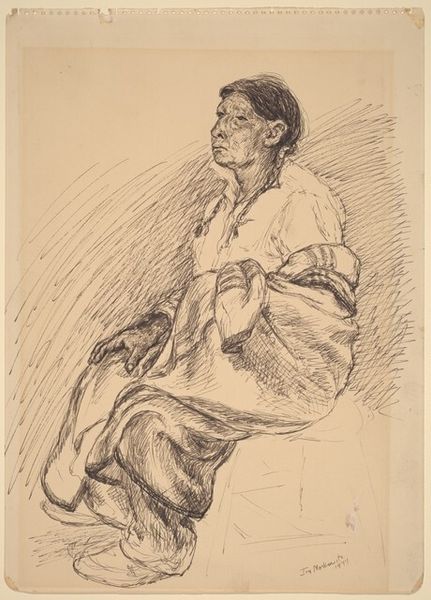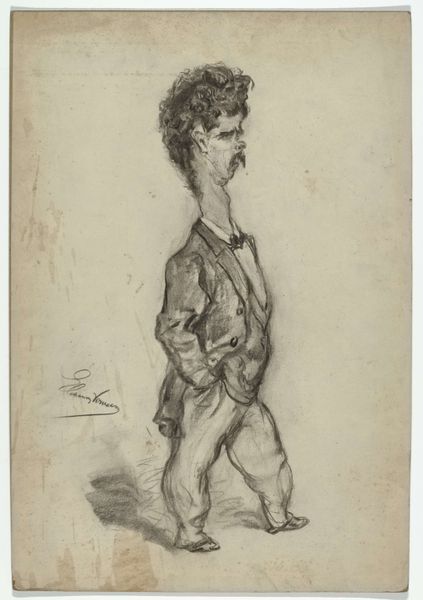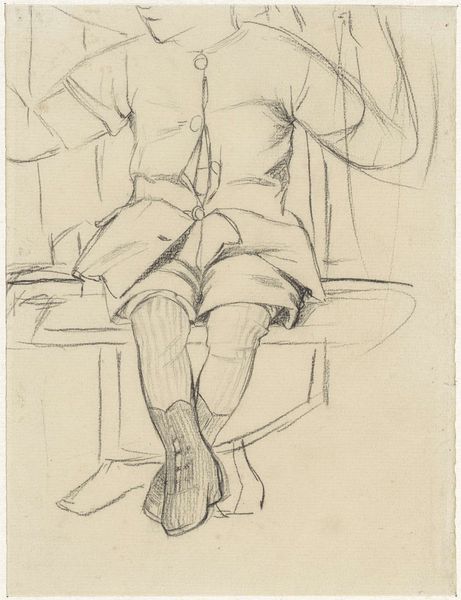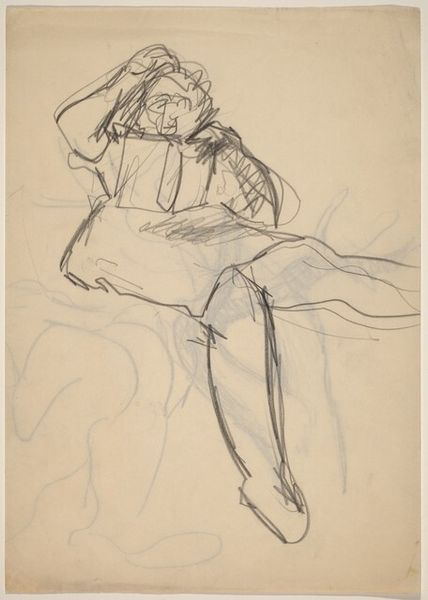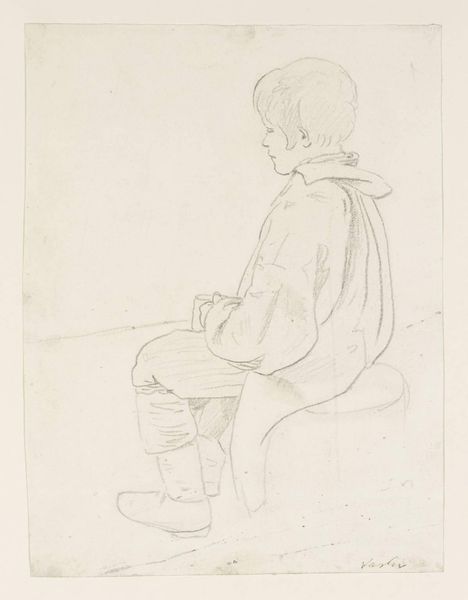
drawing, pencil
#
portrait
#
drawing
#
pencil sketch
#
figuration
#
pencil drawing
#
pencil
Copyright: Public Domain
Curator: Fritz von Uhde's "Sitzender Junge mit nackten Beinen," or "Seated Boy with Bare Legs," created sometime between 1905 and 1910. It's currently part of the Städel Museum's collection. Editor: There's something melancholic about this drawing. The way the light falls, combined with the boy’s downcast gaze…it’s very contemplative. The slightly unfinished sketchiness of the lines adds to the raw emotion. Curator: Precisely. Drawn using pencil on paper, Uhde focuses on the interplay of light and shadow to create form, demonstrating a tangible link between the artist's hand, the medium, and the resulting image. You can almost see Uhde working and reworking lines, feeling his way into the form. Editor: That's an interesting way to put it. I’m particularly drawn to the figure's clothing juxtaposed against the nakedness of the legs. It brings to mind Victorian-era childhood and the specific anxieties around purity, innocence, and class that were prevalent. What does it mean to expose part of this child in a world obsessed with concealing so much of the body? Curator: I agree; these exposed legs can also speak to the physical realities and labors associated with lower social strata. Think about Uhde’s choice to focus so intently on those legs and feet—the precise angles and gradations rendered in graphite on paper… it demands that we consider his labour as well. It becomes impossible to divorce the artwork from that physical engagement with the world. Editor: And how Uhde frames childhood...this piece serves as a reminder of children's vulnerability. Looking beyond aesthetic skill to how these children are being represented offers important insights into how contemporary societal forces influence ideas about family, virtue, and what children's labor looks like. It’s also essential to consider Von Uhde’s own gendered position as a male artist examining the childhood of boys within a very specific social setting. Curator: I appreciate you pointing that out because considering that social landscape contextualizes Uhde’s working choices and technical process. It illustrates his commitment to translating the physical world to paper by highlighting the social meanings within art. Editor: Absolutely. By bringing these perspectives together, we create a more intricate dialogue around a relatively modest artwork. Curator: I think that's a lovely spot to conclude our analysis, hopefully revealing additional insight on Fritz von Uhde's drawing and the nuances surrounding the subject.
Comments
stadelmuseum about 2 years ago
⋮
The relaxed posture and dreamy facial expression suggest that this boy is completely unaware that he is being drawn. His childlike unselfconsciousness is underlined by the informal clothes and the casual way his bare legs dangle downwards. Fritz von Uhde was clearly of the opinion that the boy's quiet pose would not last very long, because he tried to capture the scene with rapid strokes. Another indication of this is that Uhde did not sign the sheet with his full name but simply initialled it. Despite the speed of execution, the child's personality has been captured convincingly.
Join the conversation
Join millions of artists and users on Artera today and experience the ultimate creative platform.
